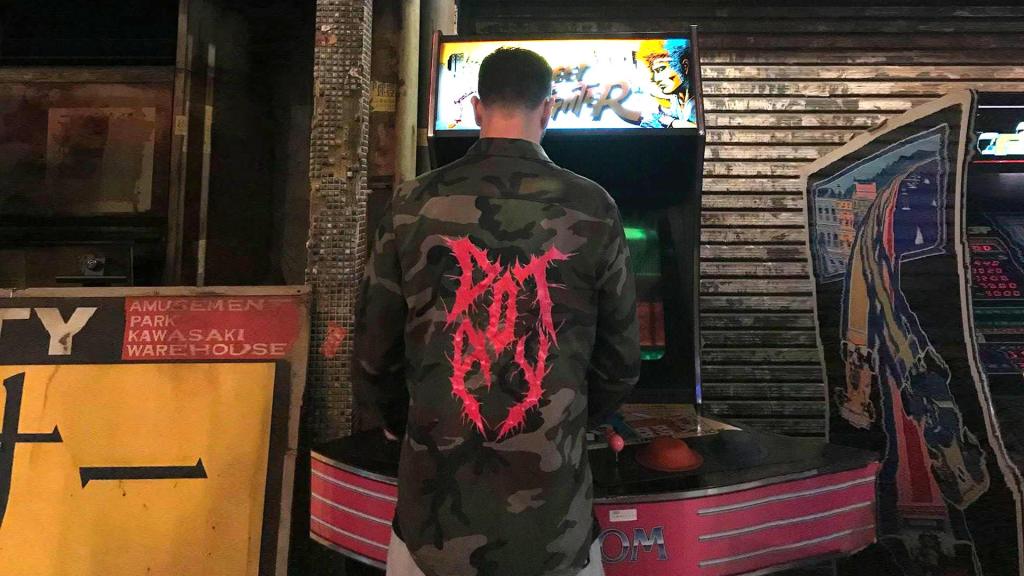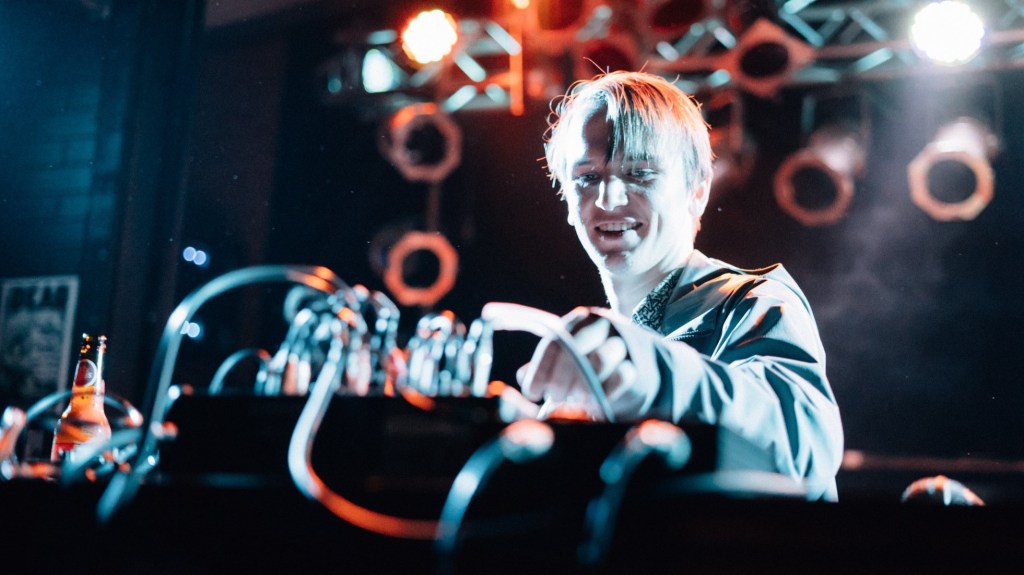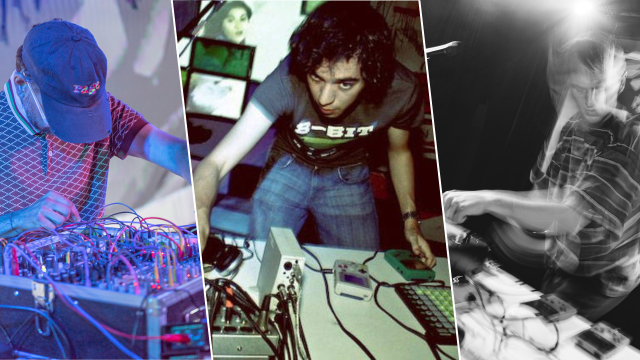We’ve spoken to plenty of people who make music for video games, but what about chiptune artists who use video games to make music? Eh? Is that anything?
The Australian chiptune scene is wider than one outside of it would assume. Sydney City Chiptune Ministries is a label that started in 2021, and aims to “keep old and new chipmusic, modular soundscapes, demoscene tracker files, hardware jam tapes, outsider electronic drones, field recordings and other DIY scene-based music alive and broadly available”. A noble feat, I’d argue.
On this label are an array of artists whose works have previously been unavailable on the platforms that are now considered the norm when it comes to music streaming, including the likes of: little-scale, an Adelaide-based chiptune artist, music technologist and lecturer at the Electronic Music Unit at the Elder Conservatorium; Dot.AY, a Melbourne-based chiptune artist whose work has seen him olay shows in New York and Tokyo; and Tom Foolery & The Family Jewellery, a Melbourne-based artist whose previously-unreleased 2018 footwork-chiptune EP with Dot.AY only just got released on streaming services last month.
I mention these three in particular because I got the chance to ask them about their craft. I can’t pretend I know diddly-squat about how playing music with a Game Boy works but I am undeniably fascinated by it, so I decided to ask little-scale, Dot.AY, and TF&TFJ about where they started, and how it all works. And hey, if you’d like some background music to go with this read, why not give this playlist a spin?
little-scale
a.k.a Sebastian Tomczak

When did you start using consoles to produce music, and what sparked your interest?
Growing up in the early 90’s, I always loved the sound of the SEGA Mega Drive, Master System, NES and SNES. So I was shocked and excited when I came across a device on eBay – a MIDINES developed by Chris Kann – that lets you control the soundchip in the NES using a computer.
It really blew my mind – it was really something I hadn’t considered possible before then. This was in the late 2000s, way before I had heard of chiptune – and really what led me down the path of getting into it. I went on to use Nanoloop 2 for the GBA, LSDJ for the GB and many other consoles and software.
What is your process in terms of setup and playing?
I don’t play live much anymore, but when I do write chipmusic I tend to use 8 and 16 bit consoles that are controlled by Ableton Live. I’ve developed interfaces and software for SEGA Mega Drive, Master System, Vectrex, Atari 2600, Commodore 64 and a range of arcade and console sound chips. So I’ve always got this really wide palette of different chiptune synths to choose from. But I have such a soft spot for the classic, gritty FM sounds of the SEGA Mega Drive.
So my setup is basically: I sequence notes and patterns in Ableton Live, these are sent to one or more consoles, and then the audio comes back into Ableton. For me, this is sort of the best of two worlds – the ease of use of the modern DAW combined with the authentic sound of vintage video game consoles. I use a similar setup when playing live but would usually restrict to one or two consoles because the setup starts to get complicated.
How would you describe your sound in terms of genre, influences, etc?
Honestly there are many artists that shaped the chiptune aesthetic throughout the early to mid 2010s but my two favourites would be Nullsleep and Paul Slocum’s Treewave project.
In terms of my sound, I would associate it with experimental and melodic four-to-the-floor dance music as well as a bit of footwork. Even though I don’t often talk about chiptune as a genre in itself, there are a lot of these common techniques that I tend to use like big pitch bends on a melody or some wild arps or a detuned lead line.
Dot.AY
a.k.a Alex Yabsley

When did you start using consoles to produce music, and what sparked your interest?
I think I started around 2007, I was studying Music Technology and working in a very high fidelity sound art context academically but for fun I was playing with noise and lo-fi sounds. Then I stumbled upon some YouTube clips of the New York chip scene guys of the time (Nullsleep, Bit Shifter) using Gameboys to make music and it clicked on a bunch of levels.
It was aesthetically oppositional to the academic stuff I was doing and also there is a semiotic relationship between consoles and the sound they make that doesn’t exist with a laptop, that is people see a Gameboy and have expectations of what it sounds like which is a rare thing in electronic music and I found really intriguing to explore.
What is your process in terms of setup and playing?
My most common and consistent setup has been two Gameboys running the tracker Little Sound DJ and a mixer. Kind of like two turntables running the original tracks that I playback and mix live adding effects as a DJ would.
More recently I have been writing songs that use the two Gameboys at once (tempo locked via the same gamelink cable used for trading Pokémon). This allows for a broader pallets of sounds and for me moves the sound further from traditional game sounds.
How would you describe your sound in terms of genre, influences, etc?
I have always been inspired by bass and club music. Anything that is heavily rhythmic and bottom end heavy is what I like to listen to and therefore try and create a version of that on the Gameboy.
I guess broadly it would be UK rave music (drum n bass, Jungle, grime, UK funky) but I also really vibe with South American dance music like Funk Carioca (Baile Funk) and Digital Cumbia. In short to describe my sound it’s chaotic and menacing micromusic made for the club.
Tom Foolery & The Family Jewellery
a.k.a Warwick McLean

When did you start using consoles to produce music, and what sparked your interest?
I found out about synthesizers and electronic music production at a time in high school about 10 years ago when I couldn’t find enough people to start a band, and I began producing music by myself.
Being in a small town, it was pretty much impossible to come across synthesizers, so you could imagine my surprise after reading online that you could turn a readily available Gameboy into a synthesizer. I had to go and buy a Gameboy because I never actually owned one, but soon enough I was making all sorts of strange sounds, and eventually whole tracks with it.
Whilst I didn’t have any real nostalgia or attachment to the sound, nor any interest in gaming, the rough and raw characteristics of the Gameboy sound combined with the ability to use it anywhere (as long as there was the perfect amount of light for the screen) had me absolutely hooked on making music with it.
What is your process in terms of setup and playing?
I often change my setup, as although I find the limitations of each setup to be challenging in a positive way, I also find it helps to switch things up to stop getting stuck in a particular sound or way of working.
Most of my Gameboy stuff has been made with a single Gameboy running LSDJ, but I have also worked with Nanoloop mono, Nanoloop 2 for Gameboy Advance, vintage computers like the Atari ST and Amiga, modern trackers like Renoise and the dirtywave M8, as well as various hardware synthesizers and drum machines. More recently, I find myself using the Gameboy less and using other hardware synthesizers more, but the approach to me feels much the same no matter what I use.
It’s all about working within the limitations of the hardware and trying to exploit the options available to make the most interesting sounds. Despite having a wide array of tools available now, I still find the limitations of the Gameboy to be inspiring every time I pick it up.
How would you describe your sound in terms of genre, influences, etc?
I can’t remember when or where it started but at some point I became known for “bangers” which seems apt. I have influences all over the place but I feel like most of my sound fits under the bass music category, ranging all the way from footwork to dub, and sometimes even techno.
Listening to music by cow’p, hizmi, little-scale, Classic Mistake, Dot.AY, boaconstructor, and 2A0X always blows my mind and makes me feel like I should use my Gameboy more.
If you’d like to learn more about how it all works as well, Dot.AY was kind enough to send through this mini-documentary which goes into the creative process behind his 2019 EP You’re Better At This Than You Think. It’s a great watch!

Leave a Reply